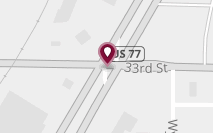A previous post on this blog discussed how the eviction process works under Oklahoma law. Although each state’s laws about eviction are different, the basics of the process work the same from state to state. One of the questions landlords in Oklahoma and elsewhere may have is, “Where do I go from here?” once the landlord has evicted a tenant either for not paying rent or for violating some other important provision of a rental agreement.
After all, an eviction, strictly speaking, is just a court order allowing a landlord to remove a tenant. It is not the same as a court order for the tenant to pay money and it is a far cry from the landlord’s actually having his or her rent or compensation for damages in hand. This is an important distinction since a landlord, in order to turn a profit on investment property, obviously has to collect rent on their investment.
Assuming the landlord cannot work out a solution with the tenant without going to court, he or she will have to resort to getting a judgment against the tenant or using other collection techniques in order to get back rent and other compensation. Getting a judgment can take some time and be complicated, particularly if the tenant disputes the final bill for rent and damages.
Further, a landlord who does get a judgment still has to use a garnishment, liens or the seizure of assets in order to actually see any money from the tenant.
Aside from just making sure to select only reliable tenants who will pay rent on time, the single best way to collect at least some back rent and damages is to take a substantial security deposit and keep it if a tenant does not pay. Landlords should be aware, however, that landlord-tenant law often imposes deadlines and other legal restrictions on how and when landlords can withhold these deposits.
